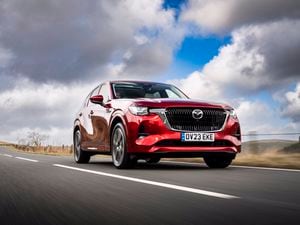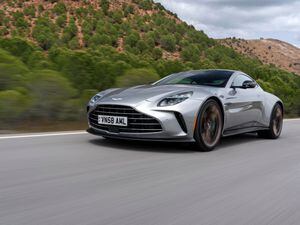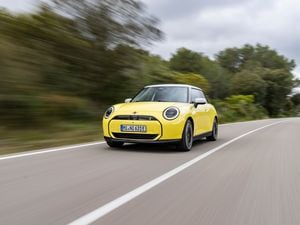Dynamic and practical – The Mazda CX-60 Diesel
It may seem a tad strange to be introducing a diesel engine in the days of the race to zero emissions and previous diesel scandals.

Mazda is undeterred and actually bullish about its new 3.3-litre e-Skyactive in the mid-range CX-60, saying it is one of the cleanest and most efficient in the world.
Clearly, the firm has identified potential markets citing high-mileage drivers and those towing regularly. The engine’s high torque delivery gives it a 2,500kg trailer weight towing capacity.
It has already proved its pedigree, a challenger to the German and Swedish premium brands, the car continues to look fresh and attractive with a dynamic, sculpted elegance that gives it real road credibility.
Both existing PHEV and new diesel models are offered in three model grades, which are: Exclusive-Line, Homura and Takumi.
They all offer high levels of equipment and cutting-edge technology, putting them firmly at the premium end of the market.
Innovations include high-end safety equipment, and connectivity through Mazda Connect for phone apps, to control vehicle settings, as well as mirroring phone settings on the touchscreen.
Innovation is also the key here with diesel, due to be phased out in new cars from 2030, but will still be on the roads for years beyond that and the new unit offers plenty.
The six-cylinder unit is available with two power levels — a 254PS all-wheel drive beast with 550nM of torque, assisted by a 48v mild-hybrid electric motor — and a less powerful 200PS unit available with rear-wheel drive only.
The firm calls it the 'right solution at the right time', it features the almost incomprehensibly named Distribution-Controlled Partially Premixed Compression Ignition (DCPCI) technology, which helps it achieve a thermal efficiency (the relationship between the total energy contained in the fuel, and the amount of energy used to perform useful work) of over 40 per cent.
The 200PS engine returns a WLTP average fuel consumption of 56.5mpg with CO2 emissions of only 129g/km in rear-wheel drive while the AWD 254PS WLTP average is 53.3mpg with CO2 emissions from 137g/km.
The drive comes via a slick-shifting eight-speed auto box, which can be switched to steering wheel paddles for a more engaging drive, and engaging Sport mode, to sharpen up engine and suspension responses.
The more powerful version delivers instant power and hauls the 2.5-tonne vehicle to 60mph in an impressive 7.5 seconds with the pleasant thrum of the six-cylinder power unit always in the background.
Not much is lost with the two-wheel drive version, just one second slower to 60mph.
It certainly made an impression on a lengthy test run around the Scottish borders and managed to get pretty close to the official figures.
On a combination of main drags, twisting country roads and potholed narrow lanes, the car handled well, leaning well into corners and feeling stable when cornering.
The ride is also pretty good, but did get unsettled on some of the rougher tracks, but overall it is a comfortable and refined SUV,
As an SUV it is also highly practical, offering plenty of space for five occupants together with a large 520-litre boot which opens up into a cavernous space with the rear seats folded.
The new engine also demonstrates there’s life in the diesel market.
Prices start at £42,990 rising to £50,730 on the road.





